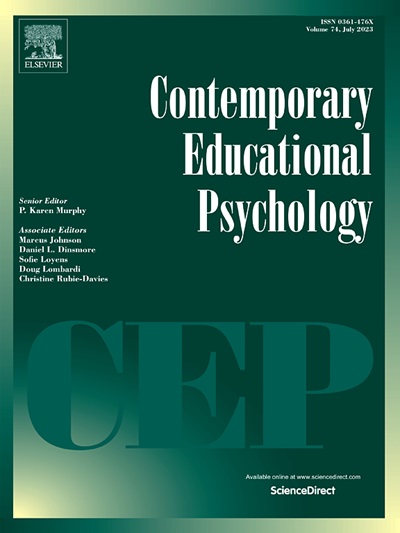学生成本感知的前体:识别近端和远端预测因子
IF 3.8
1区 心理学
Q1 PSYCHOLOGY, EDUCATIONAL
引用次数: 0
摘要
近年来,关于学生成本认知的研究非常流行;然而,很少有人研究这些成本形成之前可能发生的情况。了解成本预测因素可能有助于在这些领域实施更成熟的干预措施。例如,增加归属感的干预措施可能有助于随后降低学生对成本的感知。与直接干预成本相比,这些在文献中具有更一致结果的既定干预措施可能提供了一种有希望的降低成本的途径,因为这些直接干预措施迄今为止产生了好坏参半的结果。在本研究中,我们使用每周日记调查的方法,在整个学期的大学物理课程中,检测了学生(N = 321)每周成本感知的近端和远端前体。成本从四个方面进行了考察:任务努力、外部努力、有价值的替代方案的损失和情感成本。多层模型表明,每周归属和自我调节学习的测量预测了几乎所有成本类型的较低水平。与此同时,学生对成功和物理认同的期望的基线测量不显著。学生注册的学分数量也不能预测成本。这项研究有助于更好地理解成本观念是如何形成的,并对未来旨在降低成本的干预措施有所帮助。本文章由计算机程序翻译,如有差异,请以英文原文为准。
Precursors of students’ cost perceptions: Identifying proximal and distal predictors
Studies of students’ cost perceptions have been prevalent in recent years; however, little work has examined what may precede the formation of these costs. Understanding predictors of cost may allow for the implementation of more established interventions in these areas. For example, interventions to increase belonging may serve to subsequently reduce students’ perceptions of cost. Such established interventions with more consistent results in the literature may provide a promising pathway to reduce costs as compared to intervening on cost directly, since these direct interventions have produced mixed results to date. In the present study, we examined proximal and distal precursors of students’ (N = 321) weekly cost perceptions throughout a semester in college physics using a weekly diary survey. Costs were examined across four dimensions: task effort, outside effort, loss of valued alternatives, and emotional cost. Multilevel modeling indicated that weekly measures of belonging and self-regulated learning predicted lower levels of nearly all cost types. Meanwhile, baseline measures of students’ expectancies for success and physics identity were non-significant. The number of credits students were enrolled in also did not predict costs. This study contributes to better understanding how cost perceptions are formed and has implications for contributing to future interventions aimed at reducing costs.
求助全文
通过发布文献求助,成功后即可免费获取论文全文。
去求助
来源期刊

Contemporary Educational Psychology
PSYCHOLOGY, EDUCATIONAL-
CiteScore
16.50
自引率
3.90%
发文量
74
期刊介绍:
Contemporary Educational Psychology is a scholarly journal that publishes empirical research from various parts of the world. The research aims to substantially advance, extend, or re-envision the ongoing discourse in educational psychology research and practice. To be considered for publication, manuscripts must be well-grounded in a comprehensive theoretical and empirical framework. This framework should raise critical and timely questions that educational psychology currently faces. Additionally, the questions asked should be closely related to the chosen methodological approach, and the authors should provide actionable implications for education research and practice. The journal seeks to publish manuscripts that offer cutting-edge theoretical and methodological perspectives on critical and timely education questions.
The journal is abstracted and indexed in various databases, including Contents Pages in Education, Australian Educational Index, Current Contents, EBSCOhost, Education Index, ERA, PsycINFO, Sociology of Education Abstracts, PubMed/Medline, BIOSIS Previews, and others.
 求助内容:
求助内容: 应助结果提醒方式:
应助结果提醒方式:


